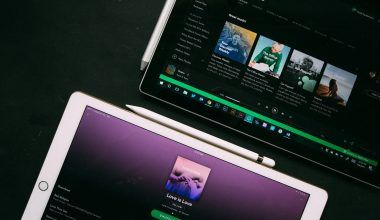Breaking into the music industry can feel like an uphill battle, especially if you don’t have the backing of a big record label. But here’s some good news: you don’t need a label to get your music on Spotify and share it with millions of listeners worldwide. Today, independent artists have more tools and opportunities than ever to thrive on their own terms.
If you’ve ever wondered how to release your music on Spotify without a label, this guide is for you. We’ll walk you through the entire process step-by-step, from creating your music to promoting it effectively. And don’t worry—you don’t need to be a tech wizard or marketing genius to make it happen.
Why Choose Spotify?
Spotify is one of the largest music streaming platforms in the world, boasting over 500 million active users. As an artist, this means your potential audience is enormous. Whether you’re releasing your first single or a full album, Spotify can be a game-changer for your career.
Plus, Spotify provides detailed analytics, allowing you to see who’s listening to your music, where they’re from, and which songs they love the most. This data is invaluable for planning your next moves as an independent artist.
Step 1: Make Your Music Stand Out
Before you even think about uploading your music to Spotify, focus on creating tracks that resonate with your audience. Here’s how you can ensure your music is ready for the big leagues:
- Invest in Quality Production: High-quality sound is non-negotiable. Work with a skilled producer or use professional music production software to make your tracks shine.
- Master Your Tracks: Mastering ensures your music sounds great on all devices, from high-end speakers to basic earbuds. Consider hiring a mastering engineer or using online mastering services.
- Create a Unique Sound: Authenticity is key. Stay true to your artistic vision while experimenting with sounds that set you apart.
Step 2: Choose a Digital Distributor
To release your music on Spotify without a label, you’ll need a digital distributor. Think of them as your middleman—they’ll get your tracks onto Spotify and other streaming platforms like Apple Music and Amazon Music. Some popular digital distributors include:
- DistroKid: Known for its affordability and user-friendly interface.
- TuneCore: Offers comprehensive support for independent artists.
- CD Baby: A great choice for one-time releases.
- Amuse: Provides a free plan for artists on a budget.
Take your time to compare these options and choose the one that fits your needs best.
Step 3: Prepare Your Music for Distribution
Once you’ve picked a distributor, it’s time to prepare your music for release. Here’s what you’ll need:
- High-Quality Audio Files: Usually, WAV format is preferred.
- Cover Art: Your artwork should be eye-catching and meet Spotify’s specifications (minimum 3000 x 3000 pixels).
- Metadata: Include the song title, artist name, and other details. Double-check everything to avoid errors.
Step 4: Upload Your Music
Most digital distributors make the upload process straightforward. Log in to your chosen platform, follow the prompts, and upload your tracks along with your metadata and cover art. Be sure to set a release date that gives you enough time to promote your music beforehand.
Step 5: Claim Your Spotify for Artists Profile
After your music is live on Spotify, claim your Spotify for Artists profile. This free tool lets you:
- Customize your artist page with photos and a bio.
- Access listener analytics to track your progress.
- Submit your tracks for playlist consideration.
Having a polished and professional profile makes a great first impression on new listeners.
Step 6: Promote Your Music
Getting your music on Spotify is just the beginning. To reach more listeners, you’ll need to promote your tracks effectively. Here are some tips:
- Social Media: Share your music on platforms like Instagram, TikTok, and Twitter. Create engaging content that draws people in.
- Email Marketing: Build an email list of fans and send them updates about your releases.
- Collaborate: Work with other artists and influencers to reach a wider audience.
- Spotify Playlists: Pitch your songs to playlist curators and encourage fans to add your tracks to their playlists.
Step 7: Keep Engaging Your Fans
Building a loyal fan base takes time and effort, but it’s worth it. Interact with your listeners on social media, respond to their messages, and thank them for their support. The more personal connections you make, the more likely they are to stick around.
Benefits of Staying Independent
Releasing your music on Spotify without a label gives you full creative control and allows you to keep a larger share of your earnings. You’ll also gain valuable experience in managing your music career, which can be incredibly rewarding.
Final Thoughts
Releasing your music on Spotify without a label is not only possible but also empowering. By following these steps and staying consistent, you can build a successful music career on your own terms. Remember, every big artist started somewhere, and your journey is just beginning.
So, what are you waiting for? Take that leap, share your music with the world, and watch your audience grow.
Related Articles:
For further reading, explore these related articles:
For additional resources on music marketing and distribution, visit DMT RECORDS PRIVATE LIMITED.






